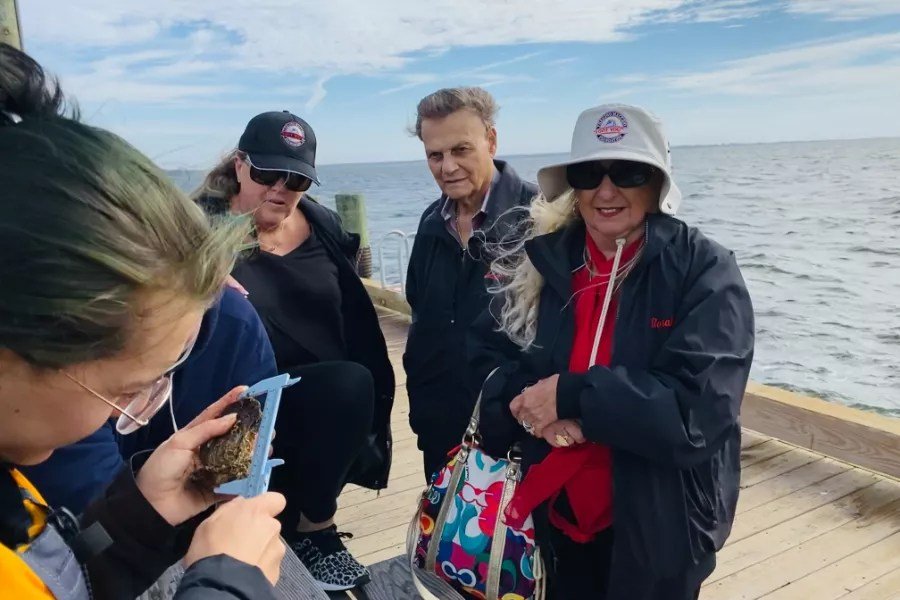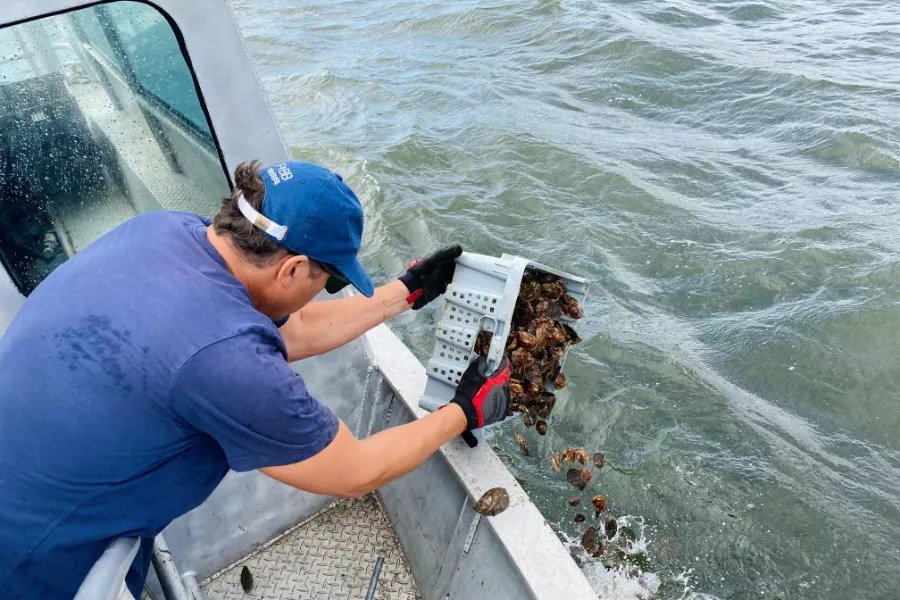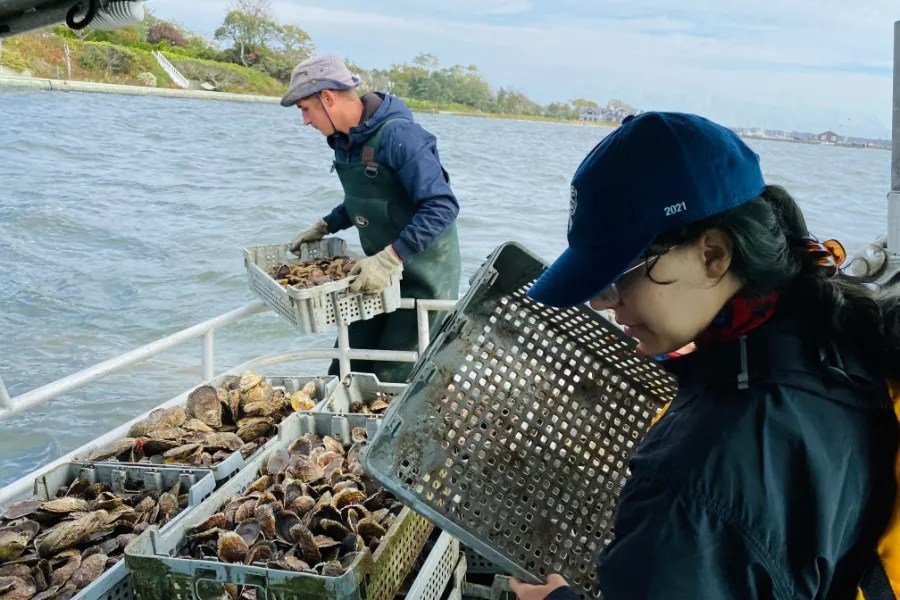(original article by Nicholas Grasso, Greater Long Island & Greater Patchogue)
The Friends of Bellport Bay played doctor Saturday morning.
Their patients: 38 oysters.
The nonprofit dedicated to improving the water quality of Bellport Bay since 2015 performed a checkup on a sack full of oysters from a natural reef that’s about 1.5 million oysters strong off Bellport Village.
The oysters were picked from the eastern end of the reef, where more than 200,000 oysters donated by the Gino Macchio Foundation had been planted in the past year.
Workers and volunteers from both nonprofit groups gathered at the dock that warm autumn morning to assess the health and wellness of their collaborative efforts, perform an autopsy on oysters that had died — and breath new life into the bay with an additional 20,000 newly planted oysters.
“The goal is to pull up a sample to demonstrate the survival rate,” said Thomas Schultz, the president and chief of water operations for FOBB. “Traditionally in this field it’s been very high. It’s been 75%, 80%.”
To retrieve Saturday’s sample, FOBB called in Gregg Rivara, a short slender man with 40 years of scuba diving experience and an affinity for marine life since childhood, from the Cornell Cooperative Extension of Suffolk County.
“I grew up on Jamaica Bay, working on the water with my father, he was a dock builder,” Rivara said. “I’m gonna be cool as a cucumber down there.”
He, along with Larissa Chraim and Maria Slavnova, two workers from FOBB, hopped on a small motorboat captained by Shultz. The diver donned about 80 pounds in gear and went underwater at 9:35a.m. He was breathing fresh air at 9:45a.m.
‘a very healthy sign’
After birthing back at the dock, Chraim and Slavnova began sorting deceased oysters from those in good health. Ken Daly, the executive director of the Gino Macchio Foundation, watched their work, alongside two distinguished guests: Gino Macchio’s grandparents, Ralph Macchio Sr. and Rosali Macchio, wearing matching foundation jackets with their grandson’s “I Got You” mantra across the back.
“It’s bringing back memories of Gino, what he pushed for and his wishes,” Ralph Macchio Sr. said.
Of the 38 oysters Rivara scooped up, 27 survived, indicating a survival rate of approximately 71%.
Rivara, now free from his flippers, walked on the scene and explained the survival rate they determined should not be taken as representative of the entire reef, which Shultz said is likely closer to 80%, as he purposefully located and bagged several deceased oysters to perform an autopsy on several subjects.
Chraim began measuring the healthy oysters, taking time to review the sponges, Crepidula fornicata, or quarterdeck shells, crabs and other marine life that hitched a ride ashore on the oysters’ shells, while Slavnova recorded their sizes in her notebook.
Rivara looked over the oysters that did not make it. Their time of death was not determined, but the blue claw crab was declared the likely culprit based on the chipping away at the edge of the shell.
“This is very normal and a very healthy sign,” Schultz said of losing the foundation species to the ten-legged predator. “Blue claw crabs are happy and they have a good source of food. And when the crabs are prospering, flounder and fluke and other bottom selling fish are happy and the entire food chain above begins to prosper.”
a fresh batch
After examining the oysters, Chraim and Schultz climbed aboard the Gino Macchio Foundation water taxi alongside foundatin employees Ethan Doutney and Steven Rafalko, as well as crates loaded with 20,000 healthy oysters.
The Gino Macchio Foundationed purchased this haul of oysters from various farmers in the Great South Bay and donated them to the FOBB’s natural reef. Shultz and Rafalko threw the 20,000 natural filters overboard in the hopes they will further imporve the water quality and the overall health of the Great South Bay’s ecosystem.
For Gino Macchio, who passed away in a motorcycle accident after working on oyster farms, reviving the Great South Bay was a crucial mission, one the foundation that bears his name aims to carry out.
Rosali Macchio said her grandson would have been very excited seeing Saturday’s work.
“We’re very proud of his vision,” she said. “And we’re happy seeing it come to life.”















